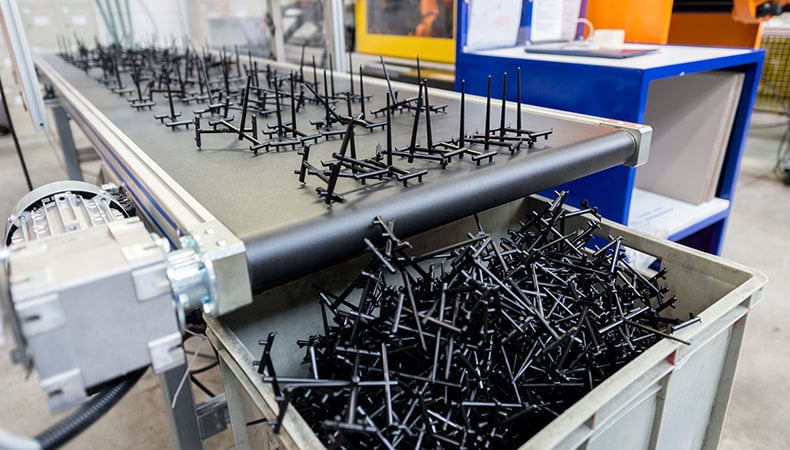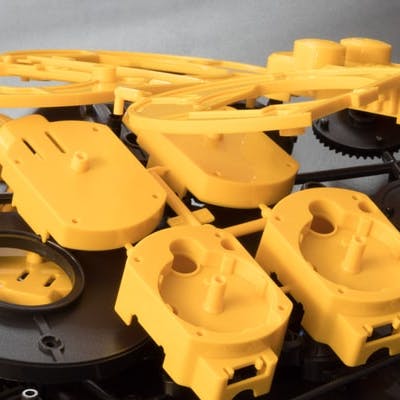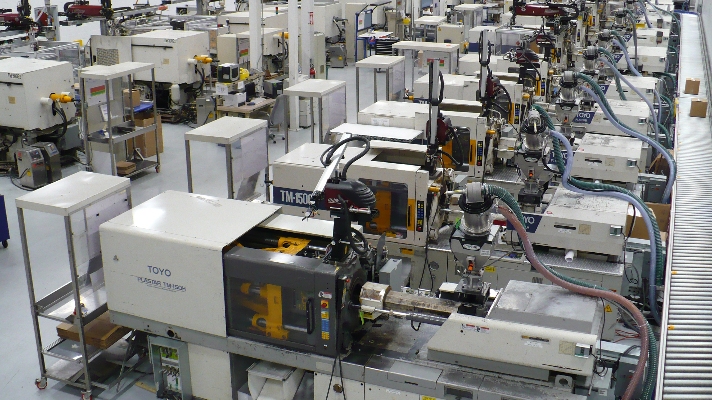Why Plastic Injection Molding Is Necessary for Precision and Resilience
Why Plastic Injection Molding Is Necessary for Precision and Resilience
Blog Article
Comprehending the Essentials of Plastic Shot Molding Processes
Plastic shot molding offers as a cornerstone of modern manufacturing, supplying a methodical method to creating complex components with precision. Exploring these important elements could disclose just how even small modifications can lead to substantial enhancements in manufacturing outcomes, elevating questions about the possibility for technology in this recognized process.
What Is Plastic Shot Molding?
Plastic shot molding is a commonly utilized manufacturing process that transforms thermoplastic and thermosetting materials into accurate and complex shapes. This technique is favored for its ability to produce high volumes of similar get rid of remarkable accuracy, making it an important technique in numerous industries, including vehicle, consumer goods, and clinical devices.
The process involves melting the selected plastic material and infusing it into a mold and mildew under high pressure. The mold and mildew, designed to the requirements of the wanted component, allows the molten plastic to take shape as it solidifies and cools. Once the material has set, the mold and mildew is opened up, and the ended up part is expelled.
Plastic injection molding uses a number of benefits, including decreased waste, uniformity in manufacturing, and the capacity to integrate intricate styles that may be testing with various other manufacturing techniques. Additionally, it supports a broad array of materials, each giving unique residential properties that can be tailored for particular applications. As industries remain to innovate, plastic injection molding remains at the leading edge, making it possible for the growth of innovative items that meet progressing customer needs.
The Shot Molding Refine
The shot molding process is an advanced method that entails several key phases to create high-grade plastic elements. Plastic pellets are fed into a warmed barrel where they are melted into a viscous liquid. This molten plastic is then injected under high pressure right into a precision-engineered mold and mildew, which shapes the material right into the wanted form.
Once the mold is filled up, the plastic is permitted to strengthen and cool, taking the form of the mold and mildew dental caries. Air conditioning time is essential, as it affects the cycle time and the last properties of the molded part. After adequate cooling, the mold and mildew opens, and the ended up part is ejected making use of ejector pins.

Materials Utilized in Injection Molding
Numerous materials can be made use of in the shot molding procedure, each offering unique residential or commercial properties that deal with specific applications. The most generally made use of materials consist of thermoplastics, thermosetting plastics, and elastomers.

Thermosetting plastics, like epoxy and phenolic resins, undergo a chemical adjustment throughout the treating procedure, causing a stiff, inflexible structure. These products are suitable for applications requiring high warmth resistance and architectural honesty, typically utilized in electric insulators and auto parts.
Elastomers, consisting of silicone and rubber-based materials, offer flexibility and strength. Their special residential properties make them appropriate for applications that require elasticity, such as gaskets and seals.
Additionally, specialized materials like bio-based plastics and compounds are gaining grip for their ecological benefits and enhanced efficiency qualities, widening the range of injection molding applications in numerous markets. Comprehending the properties of these products is vital for selecting the appropriate kind for visit here specific tasks.
Advantages of Injection Molding
Injection molding stands out as a very effective production process that provides various benefits for creating complex parts with accuracy. Among one of the most considerable benefits is the ability to produce detailed layouts that would be impossible or difficult to attain with various other techniques (Plastic Injection Molding). The process permits limited resistances and in-depth functions, ensuring top notch parts
Furthermore, shot molding is understood for its fast manufacturing abilities, making it a suitable selection for high-volume production. When the mold is produced, parts can be produced promptly, minimizing preparations and enhancing overall performance. This effectiveness not just decreases production costs yet also provides an affordable edge in the market.
The versatility of products utilized in shot molding even more enhances its appeal. A vast array of thermoplastics and thermosetting polymers can be utilized, allowing suppliers to select materials that best fulfill their particular demands, including adaptability, toughness, and warm resistance.
Additionally, the procedure minimizes waste, as excess material can typically be recycled and reused. This sustainability facet adds to a minimized ecological influence, making shot molding an accountable production selection. On the whole, the benefits of shot molding make it a favored technique for many read review industries.
Aspects Affecting Item Top Quality
While various elements can affect item top quality in injection molding, understanding these aspects is important for attaining optimal results. Trick facets include product option, processing criteria, and mold layout.
Material choice plays a vital function, as various polymers exhibit special homes that influence flowability, stamina, and thermal stability. Poor material selection can result in defects such as bending or insufficient dental filling.
Processing criteria, consisting of cycle, temperature, and pressure time, need to be carefully managed. Variations in these setups can result in variances partially dimensions and surface area coating. As an example, excessively heats may trigger deterioration of the polymer, while insufficient stress can result in brief shots.
Mold and mildew design is just as essential, as it establishes the flow of the molten plastic and the cooling process. Poorly designed mold and mildews may bring about uneven cooling rates, resulting in dimensional inaccuracies and residual stresses.

Conclusion
Finally, plastic shot molding acts as a critical production process that enables the efficient manufacturing of top quality components. Mastery of the injection molding process, including the understanding of materials and the influence of various aspects on item high quality, is crucial for achieving ideal results. The advantages of this technique, such as cost-effectiveness and layout versatility, further underscore its relevance across multiple markets, strengthening its condition as a recommended selection for high-volume manufacturing.
Plastic injection molding serves as a foundation of modern manufacturing, providing a methodical method to producing complex elements with accuracy.Plastic shot molding uses a number of benefits, consisting of lowered waste, consistency in production, and the ability to include complex designs that might be challenging with various other producing methods (Plastic Injection Molding). As industries continue to innovate, plastic shot molding remains at the leading edge, enabling the growth of innovative products that satisfy evolving customer demands
The shot molding procedure is a sophisticated technique that involves several key stages to create top notch plastic elements.In final thought, plastic injection molding offers as a crucial production procedure that makes it possible for the efficient manufacturing of premium elements.
Report this page